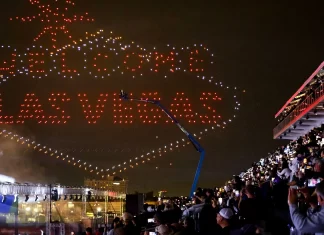A ![]() Delta Air Lines Boeing 767 had to divert to Los Angeles due to engine issues on the morning of Wednesday, November 19. First caught by AirLive, the aircraft was operating flight DL357 from Honolulu to Salt Lake City when the 767 declared an emergency. Reportedly, the aircraft was losing oil from its number two engine and diverted to LAX, where passengers were reaccommodated.
Delta Air Lines Boeing 767 had to divert to Los Angeles due to engine issues on the morning of Wednesday, November 19. First caught by AirLive, the aircraft was operating flight DL357 from Honolulu to Salt Lake City when the 767 declared an emergency. Reportedly, the aircraft was losing oil from its number two engine and diverted to LAX, where passengers were reaccommodated.
The redeye flight was cruising at 35,000 feet when the crew began receiving alerts about an issue with the number two engine (on the right side of the aircraft). After evaluating the situation, the decision was made to land in Los Angeles, a large Delta hub where passengers could easily be reaccommodated.
Looking Closer At The Flight
Delta Air Lines flight DL357 is the carrier’s daily flight from Honolulu Daniel K. Inouye International Airport to Salt Lake City International Airport. On November 18, it was being operated by N190DN, a 28-year-old Boeing 767-300ER. Per Planespotters.net, the aircraft is configured to seat 216 passengers and is powered by two Pratt & Whitney PW4060 turbofans.
The flight departed Honolulu at 11:25 pm, roughly 10 minutes behind schedule, and it was scheduled for a flight time of six hours and 11 minutes, with a scheduled arrival time of 8:26 am the following morning. Data from Flightradar24 shows that the flight was cruising routinely at 35,000 feet, but after slightly under four hours in the air, the aircraft’s number two engine’s oil pressure began falling.
The pilots would have first received an indication via the 767’s EICAS (Engine-indicating and crew-alerting-system). After reviewing the data and running the checklist, the flight crew then decided to divert while declaring an emergency and setting the transponder to the emergency 7700 squawk code. The engine was shut down, and the aircraft diverted to  Los Angeles International Airport.
Los Angeles International Airport.
The Aftermath Of The Diversion To LAX
The aircraft landed on LAX’s Runway 7R at roughly 6:26 am on November 19. The 767 was met by the Los Angeles Fire Department, which was waiting to inspect the aircraft for possible fire damage. Shortly afterwards, the aircraft taxiied to the gate under its own power. An Airbus A319-100 departed from Los Angeles bound for Salt Lake City, roughly six hours later, flying with the same DL357 flight number.
This is not a regularly scheduled segment for this flight number, which suggests that Delta intentionally scheduled a spare A319 to transport the passengers to Salt Lake City. The A319 is a significantly smaller aircraft than the Boeing 767-300ER, and as such, the passengers who weren’t on this flight were likely reaccommodated onto other, scheduled flights.
|
Aircraft |
DeltaOne |
Delta First |
Delta Premium Select |
Delta Comfort |
Economy |
Total Seats |
|---|---|---|---|---|---|---|
|
26 |
N/A |
18 |
21 |
151 |
216 |
|
|
N/A |
12 |
N/A |
24 |
96 |
132 |
N190DN remains on the ground, with no scheduled flights in the near future. Maintenance crews will be looking at the engine to determine the error that occurred and then make repairs. The PW4060 on the Boeing 767 is a decades-old, reliable, and familiar engine model, so it’s likely that this was an issue with this particular engine, rather than a problem with the PW4060 model.

Engine Fire: Delta Air Lines Boeing 767 Makes Emergency Landing In Los Angeles
The jet returned to Los Angeles shortly after takeoff.
Similar Recent Incidents
In February 2025, another Delta Boeing 767-300ER experienced engine issues in-flight. Rather curiously, this aircraft, N16065, was flying from Salt Lake City to Honolulu when it also experienced an issue with one of its PW4060 engines. In this case, the 767 returned to Salt Lake City rather than having to divert to another airport, and the flight was rescheduled, departing roughly eight hours later.
In October 2025, a Delta Air Lines Boeing 737-900ER was departing from Minneapolis St-Paul International Airport en route to Portland International Airport when the aircraft experienced an engine failure during the takeoff roll. The crew performed a high-speed rejected takeoff, and the airline moved the passengers to another 737, while the aircraft involved went into maintenance.
In both cases, the aircraft were repaired and returned to service soon afterwards, as will likely be the case with N190DN. Delta is the world’s third-largest airline, with nearly 1,000 aircraft, and as such, incidents are more likely to occur than with a smaller airline that may only have a few dozen aircraft. Ultimately, Delta and all airlines prioritize safety, and the carrier will address the issue to prevent a repeat.










